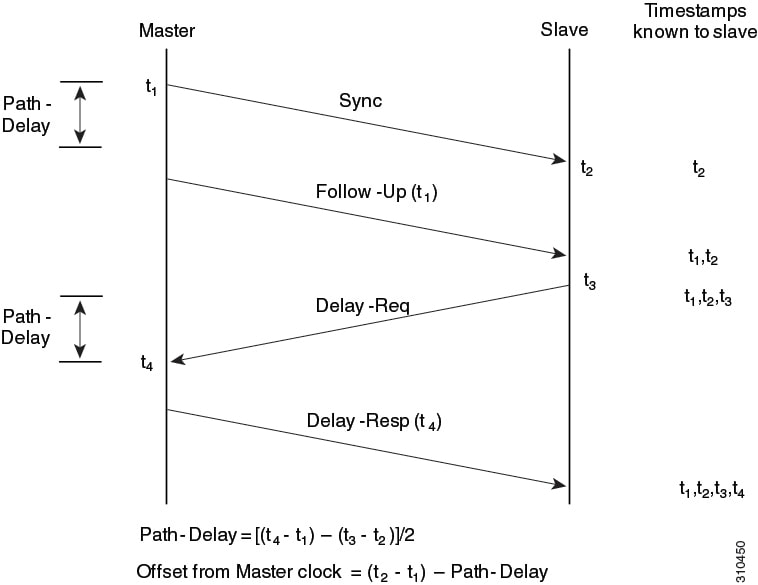Table 2. Feature History Table
|
Feature Name
|
Release Information
|
Feature Description
|
|
PTP Phase Difference Threshold Between Passive and Secondary Ports
|
Release 24.2.1
|
Passive ports can now be included in the Delay Request-Response Mechanism (DRRM), which allows for the monitoring of PTP phase
differences between a passive port and a secondary port. If these PTP phase differences surpass a predefined limit, system
logs are triggered. This feature enables you to detect potential errors such as fiber asymmetry or a clock failure in the
PTP network.
This feature introduces these changes:
CLI:
YANG Data Models:
The following data models are enhanced:
|
The Precision Time Protocol (PTP), as defined in the IEEE 1588 standard, is designed for precise time synchronization across
networked devices. It operates by having Foreign Masters (FMs) broadcast timing information to interfaces within the network.
The selection of the Grandmaster (GM), the primary reference clock, is determined by the Best Master Clock Algorithm (BMCA).
Devices synchronize their clocks to the GM through a process known as the Delay Request-Response Mechanism (DRRM), wherein
ports that are directly synchronizing with the GM enter a secondary state.
Historically, ports in a passive state—those that receive timing messages from FMs but aren’t actively syncing to the GM—didn’t
participate in DRRM, which meant they didn’t synchronize their clocks.
Starting Cisco IOS XR Software Release 24.2.1, DRRM has been extended to include passive ports, enabling them to engage in
the exchange of delay request and response packets. This enhancement allows for the calculation of PTP phase differences between
the clocks on passive ports and the GM.
This calculated PTP phase difference provides a valuable insight into the timing characteristics of other foreign masters
in the network by using the grandmaster as a reference point. It can be utilized on any boundary clock or slave clock that
has connections to at least one other foreign master.
You can access these measurements and the calculated PTP phase differences using show commands through the router's CLI. Also,
the information can be retrieved programmatically through operational data models in YANG, providing flexibility in how you
can access and utilize this synchronization data.
Phase Difference Alarm
PTP phase difference can also be used to monitor the timing properties of the network. You can configure a value at which
a bistate alarm is triggered when the PTP phase difference of a FM exceeds the threshold. The PTP phase difference can have
a negative or positive value, but the threshold can only be the absolute value. You can configure the PTP phase difference
threshold using the phase-difference-threshold-breach command.
System Log for PTP Phase Difference
When the configured threshold is reached, system logs (syslogs) are displayed. The following syslog is triggered if the configured
PTP phase difference threshold is passed through by any master.
Phase difference for clock ACDE48FFFE234567, steps removed 1, receiving-port 1, received on interface GigabitEthernet0/2/0/3 is 40ns, configured threshold is 30ns. Raising phase difference alarm.


 Feedback
Feedback